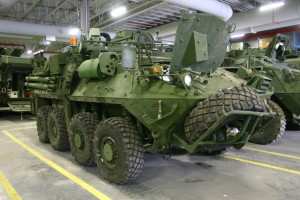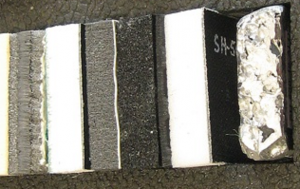
Thermal acoustic insulation is used in the floors, doors, side panels, and engine bays of military vehicles. Many different types of insulating materials are available, but you don’t need to be a material scientist to make the right choice. By choosing an experienced custom-fabricator who provides design assistance and help with material selection, you can strengthen your product designs as well as your supply chain. That’s why the North American defense industry asks Elasto Proxy for thermal acoustic solutions.
Why Military Vehicles Need Thermal Acoustic Insulation
Thermal acoustic insulation may not be visible to military personnel, but product designs that fail to account for heat and noise put the mission at risk. Big diesel engines run loud and hot, and high levels of noise and heat can violate occupational safety standards while making driving uncomfortable or unsafe. Heat can also damage sensitive components such as electronics.
If machine sensors or on-board GPS systems fail, downtime can hurt more than just the design team’s reputation. For product designers then, specifying the right kinds of materials for thermal acoustic insulation is critical. First, however, engineers need to ensure that they understand how thermal insulation and acoustic insulation work. Then, by choosing the right insulating materials, you can select the right compounds based on your application’s requirements.
Thermal Insulation for Military Vehicles
 Thermal insulation reduces the transfer of heat between objects with different temperatures. According to the second law of thermodynamics, heat always flows in the direction of the object with the lower temperature (such as from a hot diesel engine to a cool passenger cab). Because different materials conduct heat at different rates, engineers need to evaluate the thermal conductivity of an insulator. It’s also important to consider that heat is transferred by conduction, convection, and/or radiation.
Thermal insulation reduces the transfer of heat between objects with different temperatures. According to the second law of thermodynamics, heat always flows in the direction of the object with the lower temperature (such as from a hot diesel engine to a cool passenger cab). Because different materials conduct heat at different rates, engineers need to evaluate the thermal conductivity of an insulator. It’s also important to consider that heat is transferred by conduction, convection, and/or radiation.
In layman’s terms, conduction is heat that’s transferred by direct contact. Convection is heat that flows or is blown through the air, and radiated heat is transmitted by infrared waves. By using different types of thermally-insulating materials, product designs can more fully address the heat source. For example, fiberglass is a good choice for reducing heat transfer from conduction and convection. For radiated heat, aluminum foil or Mylar provides a reliable, cost-effective solution.
Acoustic insulation absorbs, transmits, or redirects sound waves – vibrations in the air that pass through objects and result in audible sound. Noise, or unwanted sounds, is measured in decibels (dBA) and has a specific frequency distribution. In outdoor environments, reflective and damping materials are used in structures such as highway noise barriers. For indoor and enclosed environments such as engine bays, sound absorption and decoupling materials are used.
Sound absorbing materials include open-cell elastomeric foams such as polyester and polyurethane. When sound is absorbed, part of the sound energy is converted to a very small amount of heat. Acoustic insulation that’s made of open-cell foams absorbs this friction within the material’s cellular structure. Open-cell foams can absorb noise across a range of frequencies, but a foam’s sound-absorption profile is determined by factors such as cell size, porosity, material thickness, and material density. With decoupling, gaps in parts of the structure prevent the sound vibration from continuing along its path.









